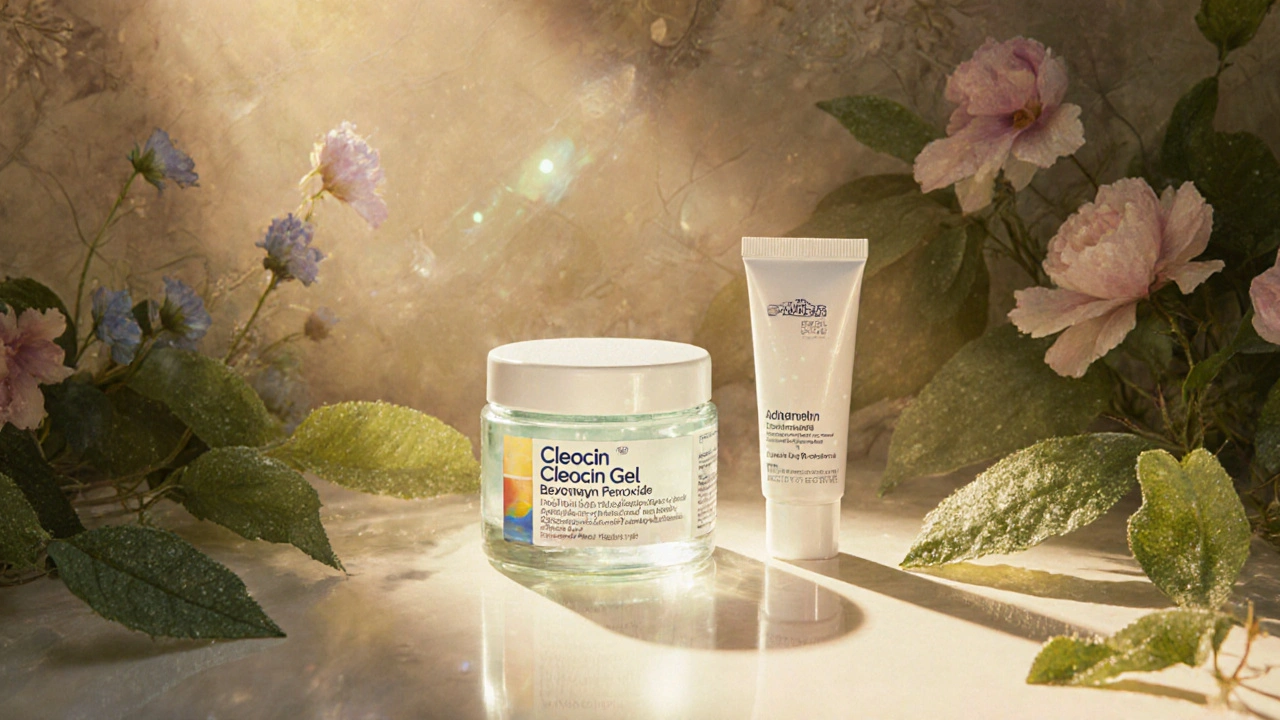Acne Treatment: What Works and How to Choose
If you’re tired of waking up to new pimples, you’re not alone. Acne can feel relentless, but there are real solutions that fit different skin types and budgets. Below is a quick rundown of the most common options, plus practical advice on when to step up to stronger meds.
Over‑the‑counter basics
Most people start with products you can buy at any pharmacy. Benzoyl peroxide 2‑5% gels or creams kill acne bacteria and dry out excess oil. Use a pea‑sized amount once daily, then gradually increase to twice if your skin tolerates it.
Salicylic acid works differently – it unclogs pores by dissolving dead skin cells. A gentle cleanser or leave‑on lotion with 0.5‑2% salicylic acid is enough for mild breakouts. Remember: less is more, especially if you have dry or sensitive skin.
For occasional flare‑ups, a short course of a topical antibiotic (like clindamycin) combined with benzoyl peroxide can cut down inflammation fast. These combos are usually prescribed for 6‑8 weeks and then tapered off.
When prescription meds become necessary
If over‑the‑counter steps don’t clear the skin after a month or two, it’s time to talk to a dermatologist. Prescription options include topical retinoids (tretinoin, adapalene) that speed up cell turnover and prevent clogged pores.
Oral antibiotics such as doxycycline or minocycline are useful for moderate to severe inflammatory acne. They’re taken for 3‑6 months, but you’ll need regular check‑ins to monitor side effects like stomach upset or photosensitivity.
The heavyweight in acne therapy is Accutane (isotretinoin). It’s a powerful retinoid that attacks every major cause of acne – excess oil, clogged pores, bacteria, and inflammation. Because it can cause serious birth defects, strict pregnancy testing and a monitoring program are required before you start.
Typical Accutane courses last 4‑6 months with doses based on body weight. Most patients see dramatic improvement, often lasting after the medication stops. However, dry skin, joint aches, and occasional mood changes can happen, so stay in touch with your doctor throughout.
Before you decide on any prescription, ask yourself these questions: Do you have persistent cystic lesions? Are you dealing with scarring? Have topical treatments failed? A dermatologist will weigh these factors and suggest the safest path forward.
Lifestyle tweaks that boost results
Even the strongest meds work better when you support them with simple habits. Keep your face clean – wash twice a day with a mild cleanser, not harsh scrubs that irritate. Change pillowcases weekly and avoid touching your face with dirty hands.
Diet isn’t a magic cure, but cutting back on high‑glycemic foods (white bread, sugary drinks) can reduce insulin spikes that sometimes worsen acne. Staying hydrated and eating plenty of fruits, veggies, and omega‑3 rich fish helps keep inflammation down.
If you’re dealing with persistent acne, don’t ignore mental health. Breakouts can be stressful, and stress itself can trigger more oil production. Short daily walks, breathing exercises, or a hobby you enjoy can make a difference.
Bottom line: start simple, monitor your skin, and move up the treatment ladder as needed. With the right mix of over‑the‑counter products, prescription help, and healthy habits, clearer skin is within reach.

Cleocin Gel (clindamycin) is a common acne treatment, but it's not always the best option. Learn how it compares to benzoyl peroxide, retinoids, and other alternatives - and what dermatologists recommend today.
Read More
Curious about Accutane? This in-depth article spills the real facts on how Accutane (isotretinoin) fights acne, its risks and side effects, tips for starting treatment, and what life on the medication actually feels like. Get clear answers on what to expect, including do’s and don’ts, myths, and everyday advice from someone living in the UK.
Read More